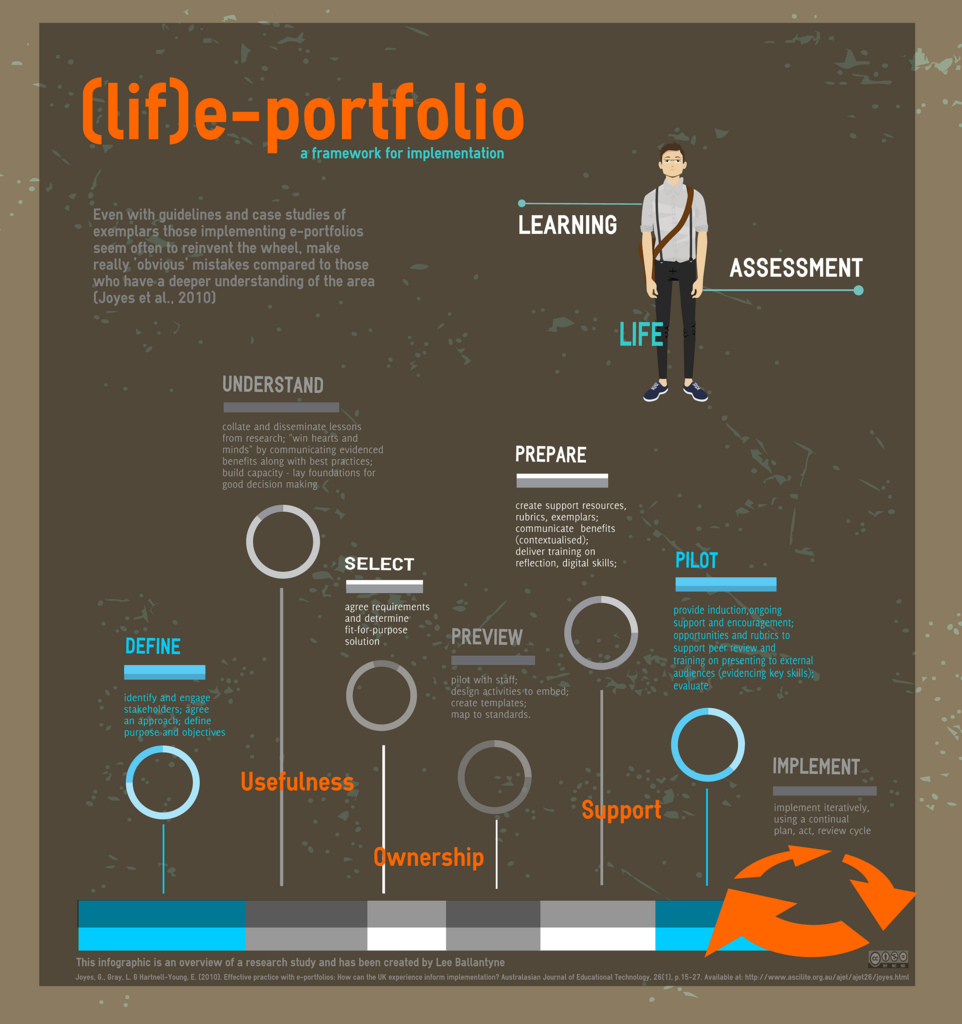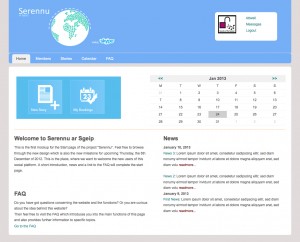
危机 – wēijī is the Chinese word for “crisis”. It comprises the symbols 危 wēi (danger) and 机 jī (opportunity)
Next week I had planned to be at the Alpine Rendezvous in France, at a workshop entitled ‘Technology Enhanced Learning: crisis and response’.
The aims of the workshop are to:
- discuss the relationships between TEL and varieties of change, discontinuity and dislocation we observe in the wider world;
- explore how communities and research traditions involved in TEL can learn from each other, particularly to bring about more open, participative, emancipatory and fluid models of TEL;
- consider and shape a research agenda for TEL that will allow relevant, rigorous and useful responses on the part of educational organisations and actors to the various discontinuities we have identified.
As specific outcomes we will have:
- contributed to a clearer and more politically engaged formulation of the Grand Challenges for TEL as part of the ARV process;
- clarified, refined and challenged our own ideas, leading to a special issue or publication.
The ever indefatigable Ilona Buchem and myself had submitted an abstract called ‘Diversity and TEL: the case for Personal Learning Environments. Sadly I have managed to double book myself and cannot go to the workshop. But Ilona will be there and she has just updated our position paper (reproduced below). And I hope the workshop will be the start of something longer term, where we can explore the social impact of TEL and how it can develop a response to the ongoing social and economic crisis.
Abstract
In this position paper, we discuss whether current TEL promotes diversity or divide and the current barriers in promoting diversity in TEL. We discuss these issues based on the example of Personal Learning Environments (PLE), which is as an approach to TEL aiming at empowering learners to use diverse technological tools suited to their own needs and connecting with other learners through building Personal Learning Networks. We argue that this approach to TEL promotes diversity through boundary-crossing and responding to the diverse needs and prerequisites that each individual learner brings in. At the same time we discuss how the PLE approach challenges current educational practices and what tensions arise when Personal Learning Environments are implemented in educational institutions.
Dangers
How can and should TEL address the numerous challenges of our times, such as economic, demographic, environmental and social challenges? One of the most straightforward contributions of TEL would be to address persisting educational inequalities across age groups, which are often determined by such factors as socio-economic background, geographic location, native language, race, ethnicity, health and gender. Shouldn’t TEL be aiming at providing all people with affordable opportunities to learn and connect with others, with open access to resources, with options of choosing how, when and where they want to learn, with support to learn when no other support is given, taking into account different educational expectations, desires, and dispositions? This may sound utopian, but the penalties for ignoring the challenge of educational disparities are immense, and pose danger on employment, mobility and social cohesion.
Divide
To provide equal opportunities of participation in an increasingly global and increasingly digital world, diminishing digital divide should become the visible agenda of TEL. The digital divide cannot be discussed only as a gap between technology haves and have-nots. Below the inequalities in access and usage, there is also a problem of a divide between contexts, domains and communities that different learners operate in. Following Gorski (2005) in his postulate for a significant paradigm shift in framing digital divide, digital inequalities have to considered from the perspective of larger educational and social inequalities:
As such, we must keep at the fore of the digital divide discussion the fact that the groups most disfranchised by it are the same groups historically and currently disfranchised by curricular and pedagogical practices, evaluation and assessment, school counseling, and all other aspects of education (and society at large).
Innovation
The need for empowered learners as citizens engaging in cross-boundary, problem-solving has been advocated as a necessary means for social innovation. It is through boundary-crossing or bridging the divides that individual and sociocultural differences can become a resource. However, mainstream TEL has not fully recognised the opportunity of boundary crossing and engaging diverse learners in collective action related to solving real life problems. Much of TEL is developed to fit the prevailing educational paradigm, focusing on ever more efficient management of learning and more reliable methods of assessment rather than encouraging learners to explore diverse ideas, experiment with diverse formats or build bridges to diverse communities.
Diversity
Can promoting diversity through TEL be a response to crisis? Certainly, in view of the growing complexity of societal, environmental and economic challenges and the ever increasing amount of information and communication possibilities, diversity may raise new questions, challenges and concerns. However, both research and practice provide evidence that diversity, in terms of individual or group attributes as well as in terms of different content, resources and tools provides valuable opportunities for intellectual engagement, personal growth and the development of novel solutions. How can we promote diversity through TEL? One possible approach would be to grant “access” to learning while at the same time broadening the meaning of “access” beyond physical access and usage rates to include access to an array of media and choices, access to support and encouragement, access to inclusive content and experiences (Gorski, 2005).
Personal Learning Environments
Personal Learning Environments, as an approach to TEL, focus on the learner-controlled and learner-led uses of technologies for learning with no centralised control over tools, information or interactions. This strong focus on autonomous, literate learners as agents and decision-makers taking control and claiming ownership of their learning environments is of course in contrast with regulated and planned processes at schools and universities, demanding radical changes in the prevailing educational paradigm. TEL, based on the Personal Learning Environments approach, vests learners with control over learning processes and outcomes, including planing, content, interactions, resources and assessment. In this way, the PLE approach challenges not only the prevailing educational paradigm, but also TEL approaches inspired by this paradigm, such as Learning Management Systems and pre-programmed, locked-down systems, such as some types of video games or mobile apps, which place learners in the role of recipients and consumers of systems devised by others, while failing to foster both generativity and boundary-crossing.
Boundary-crossing
Such pre-programmed, quality-controlled and locked-down approaches to TEL have led to “walled gardens in cyberspace”, isolating different learners and learning contexts, posing external constraints on what learners can do in such environments in terms of activities, resources and tools. Alternatively, learner-controlled uses of technologies, as embodied in the Personal Learning Environments approach, have facilitated boundary crossing and merging multiple learning contexts, domains and communities. The postulate of boundary-crossing through the PLE approach has a human and technological dimension. On one hand, the PLE approach calls for learners to claim and make use of ownership and control over their learning environment, exerting agency in terms of the human capacity to make choices and uses those choices in real world interactions. On the other hand, the PLE approach calls for openness, decentralisation, connectivity and permeability of technological systems.
Attributes

With learner ownership, control and agency combined with openness, decentralisation, connectivity and permeability of technological systems being the core attributes of the PLE approach to TEL, diversity becomes natural (Buchem, Attwell, Torres, 2011). The PLE approach promotes diversity of social interactions, diversity of learning contexts and diversity of learning practices. Personal Learning Environments entail diverse people and communities coming together, diverse technology tools and platforms used and combined by learners, diverse content production and consumption modes, diverse access points and modes of learning.
Conflicts
However, diversity promoted by the PLE approach is a source of conflict when PLEs and other systems interact. Specifically, tensions arise at the points traditionally considered as legitimate divides in the education system including TEL, for example (a) private vs. public access, (b) course members vs. non-members, (c) disciplinary knowledge vs. practice-based knowledge, (d) formal vs. informal learning context, (e) expert vs. novice, (f) individual vs. collective practice, (g) assessment vs. reflection, (h) planning vs. implementation, or (i) standards vs. innovation.
Opportunities
We argue that challenging these presumably legitimate boundaries in TEL as postulated by the PLE approach is a way to innovation which may bring viable responses to the crises.
Literature
Buchem, I., Attwell, G., Torres, R. (2011). Understanding Personal Learning Environments: Literature review and synthesis through the Activity Theory lens. pp. 1-33. Proceedings of the The PLE Conference 2011.
Gorski, P. (2005). Education equity and the digital divide. Association for the Advancement of Computers in Education Journal, 13(1), 3-45.






